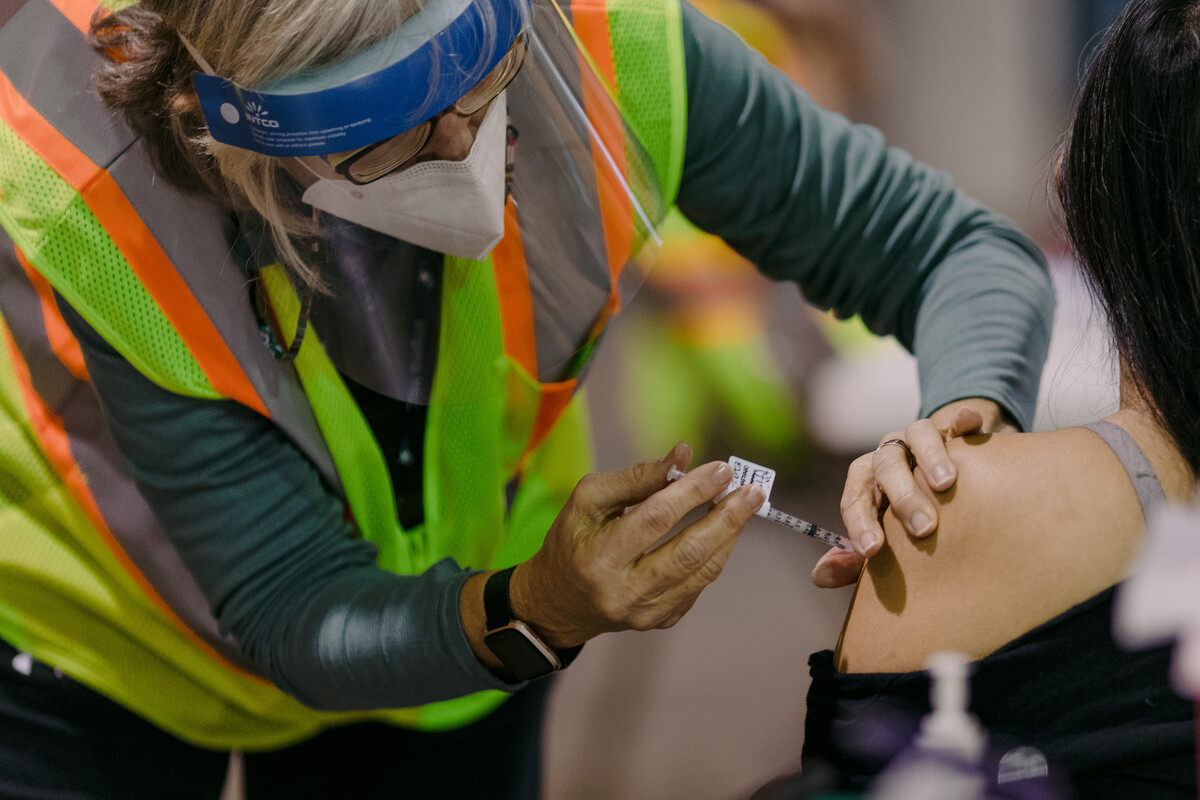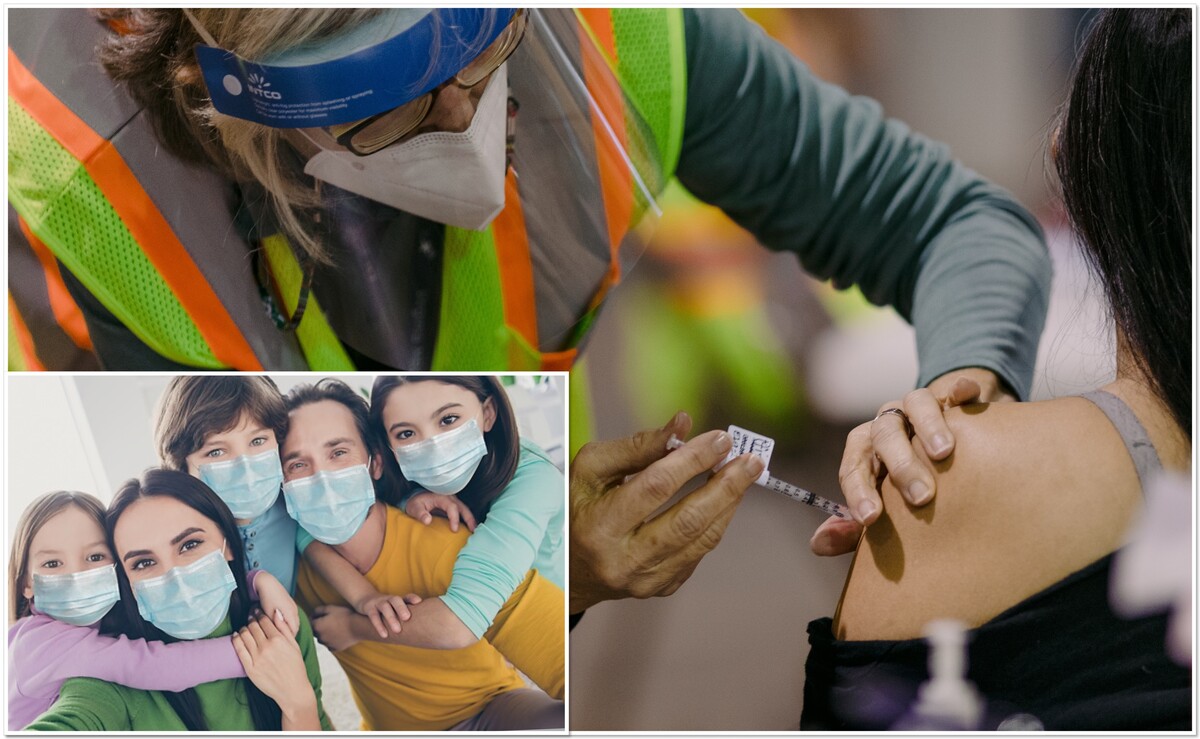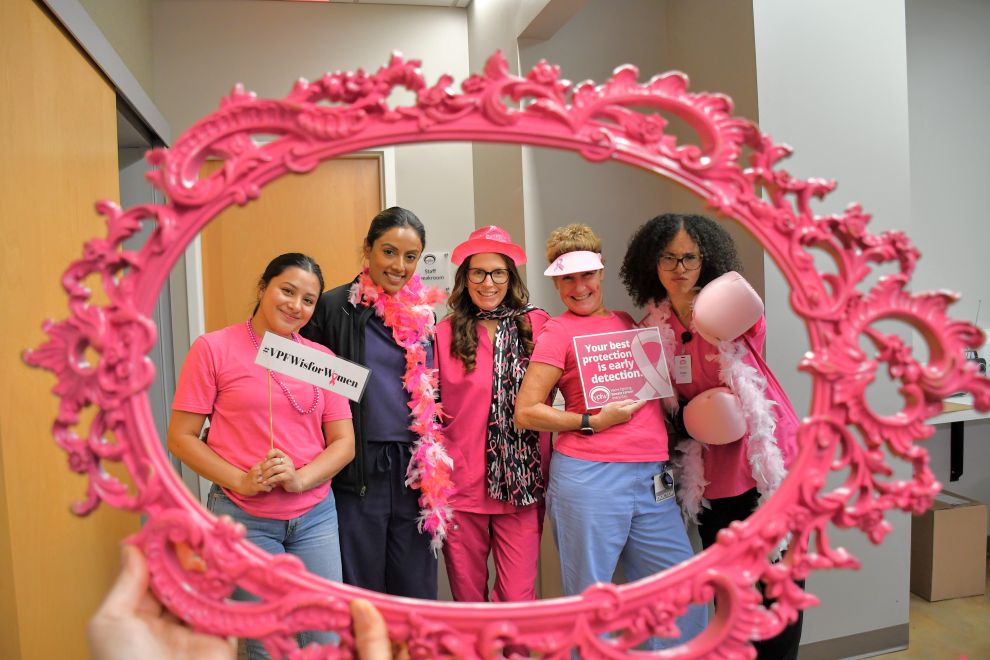[Updated February 17, 2021]
 To learn more about vaccination in Virginia, sign up for a free COVID-19 vaccine, and check your pre-registration status, visit vaccinate.virginia.gov.
To learn more about vaccination in Virginia, sign up for a free COVID-19 vaccine, and check your pre-registration status, visit vaccinate.virginia.gov.
Or call 877-VAX-IN-VA or 877-829-4682.
______________________________________________________
COVID-19 continues to require that we adjust how we live, learn, work, and play. Here’s a closer look at some of the latest newsworthy COVID-19 issues.
Monitoring Public Health in Virginia
At the Virginia Department of Health, we continue to track the impact of this novel coronavirus on our communities with tools such as Pandemic Metrics, a data dashboard unveiled in September. The dashboard provides communities with more localized information to help them make decisions about when and how to reopen schools and businesses safely. We also urge all residents to download COVIDWISE. The exposure notification smartphone app sends alerts when a person has unknowingly been around someone who has tested positive for COVID-19. You can find links to these resources on the Virginia Department of Health website: vdh.virginia.gov.
Face Coverings and Masks
The more we learn about face masks, the more we appreciate them. Wearing face masks, along with social distancing and handwashing, are recommended to avoid spreading COVID-19. By now, I hope everyone has gotten used to wearing a face mask. When face masks made of appropriate materials are worn covering the mouth and nose and fitting snug against the face, they can keep droplets that are expelled when talking, coughing, or sneezing from escaping. Because people can carry the COVID-19 virus and not have symptoms, wearing a mask helps slow the spread of the virus.
Wear a mask in indoor public settings and when around people who do not live in your household. Who should not wear a mask? Children under two, anyone who has trouble breathing, and anyone who is incapacitated. The CDC does not recommend masks with valves since droplets can be expelled through them.
There are some citizens who would challenge mask mandates as violating personal freedoms. We have seen news reports of violent confrontations in public spaces and stores over mask wearing. In September, the CDC provided some guidance to businesses, including employee training to help associates recognize the warning signs of violence related to wearing masks. You can find that guidance at cdc.gov.
Holiday Gatherings
Cooler temperatures mean most of us will be spending even more time indoors. It’s also a time for celebrations and get-togethers with Veterans Day, Diwali, Thanksgiving, Hanukkah, Christmas, Kwanzaa, and New Year’s Day holidays over the next few months. While it may be tempting to invite the extended family and friends over to watch the big game or enjoy a big holiday dinner, that might not be the best thing to do right now. The CDC advises that celebrating with your immediate household poses a low risk for catching COVID-19. Similarly, virtual celebrations are low risk. Go HERE for CDC guidelines on celebrating the holidays with small gatherings at home.
Before you think about hosting or attending a gathering, consider first what is legally permitted. As of the writing of this article, under Virginia Executive Order 67 (as amended), all public and private in-person gatherings of more than twenty-five individuals are prohibited.
If you’re trying to decide whether to attend an event, consider factors that can impact the spread of COVID-19, including:
• Is the event indoors or outdoors?
• How long will the event last?
• How many people are expected to attend, and is the space large enough for guests to spread out safely?
• Will social distancing, mask-wearing, and handwashing policies be enforced?
• How bad is COVID-19 spreading in the community?
If you have COVID-19 symptoms, please do everybody a favor and stay home, change your status on COVIDWISE, and get in touch with anyone you many have come in contact with while you were ill.
Herd Immunity
You may have heard or read the terminology “herd immunity” in discussions about COVID-19. Sometimes called community immunity, it refers to a situation in which a significant portion of the members of a group or community have immunity against a contagious disease, either from vaccination or previous infection. The greater the herd immunity, the lower the chance the disease will spread if introduced into the group or community by an infected person.
The scientific verdict is still out on whether a person who gets COVID-19 is protected from getting it again, and if there is some immunity, how long it lasts.
While vaccinations directly benefit individuals who get them, they also indirectly benefit unvaccinated individuals by reducing the chance that there will be a disease outbreak in a community. That’s if enough people get vaccinated. The more people who are vaccinated in a community, the greater the herd immunity. Herd immunity helps protect those who cannot get vaccinated, including infants under age six months and people who are allergic to vaccine ingredients.
An analysis in Nature Reviews Immunology suggests that at least 50 percent of the population would have to become immune to COVID-19 before the virus stopped causing large outbreaks.
Without a vaccine, had the United States pursued the route of letting nature take its course (instead of implementing stay-at-home orders and mask mandates, for instance), we would expect from 500,000 to 2.1 million deaths from COVID-19 before herd immunity is reached. As it is, face masks, social distancing, handwashing and other measures are helping mitigate the human toll of the virus while vaccines are in development.
Vaccine Development and Distribution
COVID-19 is new, but public health has been down a road like this before, faced with making plans to distribute vaccines for an infectious disease that threatened the lives of millions of people. And doing it at warp speed.
In fact, the most recent episode wasn’t too long ago.
In April 2009, a genetically new strain of H1N1 flu virus was first detected in a 10-year-old patient in California, followed by clusters of outbreaks in the U.S. Later that month, the World Health Organization urged nations to activate their pandemic preparedness plans. On June 11, with outbreaks reported in more than seventy countries, a pandemic was declared. By July, clinical trials were underway of H1N1 influenza vaccines, and by fall 2009, five H1N1 vaccines were available. Getting that vaccine out to millions of Americans was a monumental effort that relied on public and private partnerships. By January 2010, approximately 124 million doses of H1N1 vaccine had been distributed, and by May, an estimated 90 million doses had been administered.
COVID-19 vaccine development, distribution, and vaccination promises to be a similarly monumental undertaking between public and private partners.
More than a dozen COVID-19 vaccines are in development, and several companies have reported encouraging results. If the results of clinical trials underway prove the vaccines being studied are safe and effective, a vaccine could be available for use in the U.S. by the end of 2020.
Every year, the thirty-five local Health Districts that are part of the Virginia Department of Health conduct mass flu vaccination events that test and showcase readiness to do large-scale vaccinations. The CDC has developed a playbook for states for distribution of the COVID-19 vaccine when it is deemed safe.
Vaccine supply potentially will be limited in the earliest stages and focused on reaching critical populations, including healthcare workers and people at risk of severe COVID-19 illness. COVID-19 vaccination will likely require two doses of vaccine given three or four weeks apart, with vaccine registries used to track who is getting what vaccine since different vaccine products are not expected to be interchangeable. In October, the Virginia Department of Health requested that healthcare providers interested in administering COVID-19 vaccine indicate their intent. Along with those efforts, the CDC and states will roll out information campaigns to educate and inform the public about COVID-19 vaccination.
As we find a way to live with this pandemic and do our best to protect everyone in our community, remember that you are safer at home. Please do your best to follow guidelines that will help limit the spread: maintain physical distance of six feet from others, wash your hands frequently, and wear a mask in public. As always, for the most reliable information about COVID-19, go to official government and public health sources, including vdh.virginia.gov and cdc.gov.





